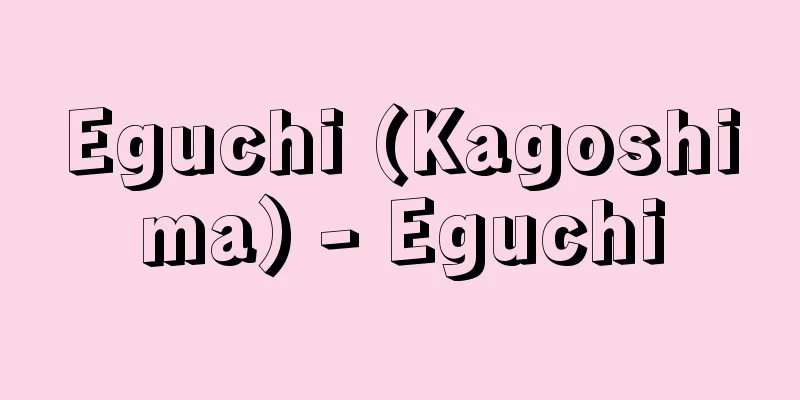Hosta - Giboshi

|
A cold-tolerant perennial plant of the lily family (APG classification: Asparagaceae). It grows wild in eastern Asia, especially in Japan, and is classified into 36 species. It grows wild in fields, waterside, forests, and rock walls, and even in the wild, there is a great deal of variation. H. tokudama F.Maek. and H. sieboldiana Engl. have beautiful broad, egg-shaped, powdery white leaves, and H. undulata Ball., with its variegated leaves, is particularly common and has been planted in gardens all over the country since ancient times and used in flower arrangements. H. plantaginea Asch., a large, white-flowered, nocturnal blooming plant that is said to have been favored by Yang Guifei, is particularly beautiful and fragrant. Other wild species include Iwagiboshi, Oobagiboshi, and Kobagiboshi. Depending on the cultivation method, the size of the plant varies, with the leaf length reaching up to 1 meter, while some small species only reach 5 centimeters when grown in a small pot. The stems of large and medium species are fleshy and short, while the stems of small species are fibrous and thin, growing to 1-7 centimeters. They reproduce by putting out several buds from one bud every year. Several buds appear from one bud in spring. Most species have obovate leaves with pointed parallel veins on long petioles. The shape of the leaves varies from wide to narrow. A branchless flower stalk grows from the center of a large bud, and early-flowering species bloom in May, while late-flowering species bloom in October. The flower stalk is upright or ascending, and can be long or short, with several to many flowers. The flowers are bell-shaped with six lobes, and are often pale purple-blue in color. They are extremely hardy, and should be divided and replanted once every few years. They are highly drought-tolerant except for a few species such as Mizugiboshi, but grow better in humid places. Shade tolerance varies by species. There are a great many cultivars, suitable for Western and Japanese style gardens, and also good for potted plants. It is hugely popular in Europe and the US, with cultivars being announced every year and some even starting to be imported, but in Japan there are still few enthusiasts or breeders. In addition to being an important ornamental plant, its roots spread very well and are useful for retaining soil on sloping land and preventing the collapse of rock walls. When grown densely, it prevents the surface from drying out too much, and the leaf stems have been eaten as a wild vegetable in various places since ancient times, and some species can be used as greens. [Kiyoro Yoshie March 20, 2019] Young leaves cut from the base of the Oobagiboshi plant are edible as wild vegetables. They are also called urui. The leaf stalks are boiled and dried, called yamakanpyo, and are a preserved food. [Editorial Department, March 20, 2019] Cultural historyPerhaps because it is an uncommon plant, giboshi does not appear in the Manyoshu or Heian literature, but first appears in the Manjuyabon Setsuyoshu (Manjuyahon Setsuyoshu) from the mid-Edo period under the name "Giboshi". Nakamura Tekisai also illustrated a gyokusan (ball-shaped hairpin) in his Kinmozui (Kinmozui) (1666) as a type of giboshi, but the gyokusan is actually the Chinese Tamanokanzashi. Kaibara Ekiken listed the name of Goryeo giboshi in Yamato Honzo (Yamato Honzo) (1709). The species is unclear, but it is suggested that it was introduced from Korea. In Europe, the Fukurin giboshi, Suji giboshi, and Togiboushi were first introduced by Siebold after 1830. [Hiroshi Yuasa March 20, 2019] ©Kanzo Otawa "> Main types of hosta (pictures of specimens) A wild species of hosta. It is often planted for decorative purposes. It blooms around July. ©Shogakukan Photo by Masatoshi Hirose "> Hosta maximowicziana A wild species of hosta. It is slightly smaller than the large-leaved hosta. ©Shogakukan "> Kobagi Hosta This is a hosta with variegated leaves, and has long been used for ornamental purposes. It blooms in July. ©Seishohmaru "> Hosta stripes Also known as Urui ©Shogakukan "> Hosta maximowicziana (young leaves) ©Shogakukan "> Flower of Hosta oba (morphology) Source: Shogakukan Encyclopedia Nipponica About Encyclopedia Nipponica Information | Legend |
|
ユリ科(APG分類:キジカクシ科)の耐寒性多年草。東部アジアとくに日本に多く野生し、36種類に分類される。原野、水辺、森林内、岩壁などに野生し、野生地でも変異が非常に多い。トクダマH. tokudama F.Maek.やトウギボウシH. sieboldiana Engl.は広卵形で粉白の大葉が美しく、斑入(ふい)り葉のスジギボウシH. undulata Ball.などはとくに一般的で古来各地の庭に植えられ、いけ花にも使われてきた。楊貴妃(ようきひ)が好んだという大輪の白花で夜開性のマルバタマノカンザシH. plantaginea Asch.は芳香があり、とくに美しい。このほか野生種にイワギボウシ、オオバギボウシ、コバギボウシなどがある。栽培法によって大きさが変わり、葉長1メートルにもなり、小形種を小鉢作りにすると5センチメートルほどにとどまるものもある。大形および中形種の茎は肉質で短く、小形種の茎は繊維質で細く1~7センチメートルに伸び、年々1芽から数芽を出して殖える。1芽からは春に数芽を出す。大部分の種類は、長い葉柄の上に倒卵形で先のとがった平行脈のある葉をつける。葉の形は広狭さまざまである。大きい芽の中央から無枝の花茎を出し、早咲き種は5月、遅咲き種は10月に開花する。花茎は直立か斜上し、長短があり、数花から多数の花をつける。花は6裂片からなる鐘状で、淡紫青色が多い。きわめて強健で、数年に1回株分けして植え換えする。ミズギボウシなど数種を除けば耐乾性は強いが、湿気のある所のほうが成長がよい。耐陰性は種類によって異なる。 園芸品種はきわめて多く、洋風和風の庭園に適し鉢植えにもよい。欧米では大流行で年々園芸品種が発表され、輸入もされ始めたが、日本では愛好家や品種改良家はまだ少ない。観葉観花の重要な植物であるほかに、根が非常によく張って、傾斜地の土止めや岩壁の崩壊防止にも役だち、密生させると地表の過度の乾燥を防ぐし、古来山菜として各地で葉柄を食用にし、蔬菜(そさい)として利用できる種類もある。 [吉江清朗 2019年3月20日] オオバギボウシの基部から切り取った若い葉は山菜として食用となる。ウルイともいう。葉柄をゆでて干したものは山かんぴょうとよばれ、保存食になる。 [編集部 2019年3月20日] 文化史じみな植物のためか、ギボウシは『万葉集』や平安文学に現れず、江戸時代中期の『饅頭屋本節用集(まんじゅうやぼんせつようしゅう)』に初めて「秋法師(ぎぼうし)」の名で出る。また、中村惕斎(てきさい)は『訓蒙図彙(きんもうずい)』(1666)に、俗にいうギボウシとして玉簪(ぎょくさん)を図示したが、玉簪は本来中国のタマノカンザシである。貝原益軒は『大和本草(やまとほんぞう)』(1709)で、高麗(こうらい)ギボウシの名をあげている。その種類はさだかでないが、朝鮮からの渡来をうかがわせる。ヨーロッパには、シーボルトが1830年以降にフクリンギボウシ、スジギボウシ、トウギボウシを最初に伝えた。 [湯浅浩史 2019年3月20日] ©大多和鐘三"> ギボウシのおもな種類〔標本画〕 野生種のギボウシの一つ。観賞用に植えられることも多い。花期は7月ごろ©Shogakukan 撮影/広瀬雅敏"> オオバギボウシ 野生種のギボウシの一つ。オオバギボウシよりやや小形である©Shogakukan"> コバギボウシ 斑入り葉のギボウシで、古くから観賞用とされてきた。花期は7月©Seishohmaru"> スジギボウシ ウルイともいう©Shogakukan"> オオバギボウシ(若葉) ©Shogakukan"> オオバギボウシの花〔形態〕 出典 小学館 日本大百科全書(ニッポニカ)日本大百科全書(ニッポニカ)について 情報 | 凡例 |
<<: Adsorbent bubble separation
>>: Foaming agent - Kihozai (English spelling)
Recommend
control
…It is a musical term derived from the Latin altu...
Soap flotation (English spelling) soapflotation
…Dithiophosphates are widely known under the trad...
Charon (English spelling)
The largest moon of the dwarf planet Pluto. It was...
gliding
...It is thought that pterosaurs also flew by gli...
Meson - meson (English spelling)
Among the elementary particles that make up matte...
Tachibana Moroe - Tachibana Moroe
A politician of the Nara period. He was the son o...
Yoshiko - Giko
The posthumous name of Tokugawa Mitsukuni, the sec...
Tororoaoi (Yellow Shu Aoi) - Tororoaoi (English spelling) sunset hibiscus
A perennial plant of the Malvaceae family native t...
parisian
…(f) taillé: Various vegetables are cut into the ...
Oguzname - Oguzname
…A legend, tale, or heroic epic poem passed down ...
Trauma
It refers to an injury caused to a part of the bo...
Pawson, Anthony James
1759‐1808 A British classical scholar. With the su...
International Geophysical Year
The IGY was an internationally-coordinated geophy...
Cape of Storms - Arashi no Misaki
…A small protrusion at the southern tip of the Ca...
Neopilina
…The annelids are divided into six classes, each ...

![Obara [Village] - Obara](/upload/images/67cb2170118d4.webp)







